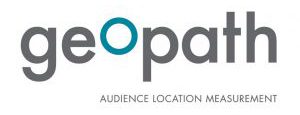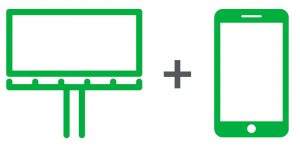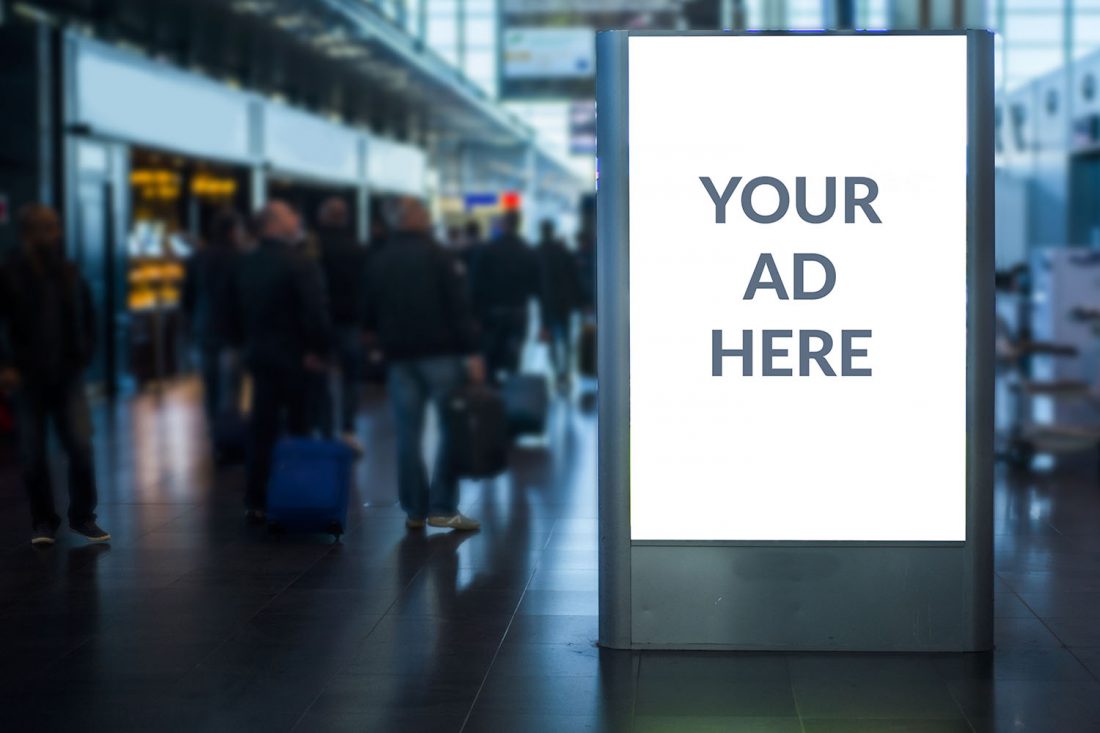The Digitization of Out of Home
 Out of home media, defined as static and digital billboards, posters and street furniture, is one of the last true mass reach vehicles. As fragmentation further splinters the media landscape and consumers have more devices, bundles, channels and apps at their fingertips, out of home media only requires consumers to step outside to be seen. And that’s easy… we are outside more than ever before. According to the Outdoor Advertising Association of America (OAAA), consumers now spend 70% of their waking hours away from home.
Out of home media, defined as static and digital billboards, posters and street furniture, is one of the last true mass reach vehicles. As fragmentation further splinters the media landscape and consumers have more devices, bundles, channels and apps at their fingertips, out of home media only requires consumers to step outside to be seen. And that’s easy… we are outside more than ever before. According to the Outdoor Advertising Association of America (OAAA), consumers now spend 70% of their waking hours away from home.
While other traditional mediums have seen a decline in growth, out of home is the only traditional media channel gaining in share. According to the OAAA, ad spending has risen eight years in a row and is projected to grow another 12% by 2020. Once focused on zip codes and traffic patterns, the out of home industry is stepping out of the dark ages and becoming a key player in a media landscape that is increasingly focused on location intelligence, attribution, innovation and digitization.
 For a time, out of home was surpassed by other mediums in terms of innovation and advancement in measurement. As the implementation of local people meters grew across television markets and the use of persistent data in digital exploded, out of home was still being measured by DECs (Daily Effective Circulation), the same currency for more than 30 years. This barebones metric relied entirely on car counts with little interest in who was in those cars, what they saw or how they behaved. Finally, in 2016, the former Traffic Audit Bureau evolved into Geopath, a not for profit organization whose mission is to independently audit and report out of home advertising ratings. Geopath’s new ratings system was designed to provide out of home with the credible metrics it needed to be compared with other measured media. The new ratings now consider an out of home ad unit’s visibility, opportunity to see an ad, positioning of the unit and most importantly the demographics of the consumers passing by the unit. While the out of home medium sat relatively still in the previous decades, this advancement in measurement evolved rapidly.
For a time, out of home was surpassed by other mediums in terms of innovation and advancement in measurement. As the implementation of local people meters grew across television markets and the use of persistent data in digital exploded, out of home was still being measured by DECs (Daily Effective Circulation), the same currency for more than 30 years. This barebones metric relied entirely on car counts with little interest in who was in those cars, what they saw or how they behaved. Finally, in 2016, the former Traffic Audit Bureau evolved into Geopath, a not for profit organization whose mission is to independently audit and report out of home advertising ratings. Geopath’s new ratings system was designed to provide out of home with the credible metrics it needed to be compared with other measured media. The new ratings now consider an out of home ad unit’s visibility, opportunity to see an ad, positioning of the unit and most importantly the demographics of the consumers passing by the unit. While the out of home medium sat relatively still in the previous decades, this advancement in measurement evolved rapidly.
The evolution from car counts to demographic-specific impressions now allows brands to target precise out of home locations where their audience lives. We can now drill down to find the locations that reach targeted audiences – for example, for a retailer who wants to reach Women 25-49 with a household income over $50k. Fast forward to today, and with the use of mobile data, the picture is even more clear.
The Proliferation of Mobile Data
 Powered by persistent location data and device IDs, and anonymized in aggregate, the proliferation of mobile data has allowed us to understand how consumers move throughout the world, including how they move past out of home displays. Location data from ad tech companies PlaceIQ and Ubimo provides useful audience insights which brands and agencies can leverage to create more relevant content and more strategic outdoor campaigns. By utilizing this mobile location data, we can, for example, see which consumers visited a Starbucks each morning. We can then use that data to create an out of home plan that leverages those movement patterns to put our message in front of that audience.
Powered by persistent location data and device IDs, and anonymized in aggregate, the proliferation of mobile data has allowed us to understand how consumers move throughout the world, including how they move past out of home displays. Location data from ad tech companies PlaceIQ and Ubimo provides useful audience insights which brands and agencies can leverage to create more relevant content and more strategic outdoor campaigns. By utilizing this mobile location data, we can, for example, see which consumers visited a Starbucks each morning. We can then use that data to create an out of home plan that leverages those movement patterns to put our message in front of that audience.
 The largest out of home players such as Clear Channel Outdoor and Lamar Outdoor are working with third party data aggregators to supply this geolocation and mobile data. Introduced in 2016, Clear Channel Outdoor’s RADAR product has paved the way for leveraging mobile data for strategic out of home planning and has pushed the boundaries of what’s possible with location intelligence. Moreover, their RADARView visualization platform provides the opportunity to optimize out of home campaigns by entering in campaign specific information like demographics, audience segments or locations to reach the consumers on the pathways most traveled. For out of home, mobile location data is now more than just a measurement tool. The ability to target audiences and serve contextually relevant content, which were once deemed exclusive to digital, is now possible with out of home.
The largest out of home players such as Clear Channel Outdoor and Lamar Outdoor are working with third party data aggregators to supply this geolocation and mobile data. Introduced in 2016, Clear Channel Outdoor’s RADAR product has paved the way for leveraging mobile data for strategic out of home planning and has pushed the boundaries of what’s possible with location intelligence. Moreover, their RADARView visualization platform provides the opportunity to optimize out of home campaigns by entering in campaign specific information like demographics, audience segments or locations to reach the consumers on the pathways most traveled. For out of home, mobile location data is now more than just a measurement tool. The ability to target audiences and serve contextually relevant content, which were once deemed exclusive to digital, is now possible with out of home.
Actionable Attribution
In the past, out of home also struggled to demonstrate actionable results and ROI. There was neither the data nor the measurement systems to prove out of home’s value. In opening out of home to the world of mobile data, we are now seeing partnerships between third party data providers and vendors designed to measure the real-world impact of out of home. Clear Channel Outdoor has partnered with location data provider Cuebiq to tap into location insights and visitor attribution analysis to identify audiences exposed to billboard locations and their subsequent behaviors. Clear Channel and Cuebiq anonymously identified the mobile IDs exposed to a fitness center client’s out of home campaign. They found a 240% increase in guest traffic using the Cuebiq system to analyze those exposed to the ads. Early results have proved out of home to be successful at multiple points in the purchase funnel, from driving awareness to driving conversion and generating higher ROI.
Beyond the use of mobile data for smarter planning and better attribution, mobile is a highly complementary medium to out of home. By geofencing out of home boards and retargeting consumers with mobile, we can send follow up or action-oriented messages directly to consumers. When paired with mobile, out of home can drive consumer action. According to a Nielsen report, out of home ads prompted 38% of users to either visit a Facebook page or engage with a brand on Facebook within six months of seeing an ad. From the same report, 46% of users search for brand information after viewing an out of home ad. While out of home brings reach and flashy creative potential, mobile supplies the actionable functionality. Adding mobile to out of home campaigns allows consumers to engage with content.
The New Frontier
![]() The newest evolution in the relationship between out of home and mobile is the slow rise of programmatic out of home buying and selling. The ability to buy people instead of space, along with the technology to do so, drove massive growth in digital. Programmatic out of home, propped up by location data, enables out of home inventory to be bought and sold via the use of software. While the first programmatic out of home solutions focused on networks of digital screens, more and more out of home players are exposing their inventory to programmatic trading. In 2019, Outfront Media announced plans to programmatically trade over 37,000 video screens across New York City subway and rail cars. Now, industry leading DSPs including The Trade Desk, Adelphic, Amobee, Dataxu, MediaMath, Simpli.fi, Verizon Media and Vistar Media can all tap into a variety of digital out of home inventory. Using location data and movement patterns, programmatic out of home placements and exposures can move throughout the day to reach the target audience. If the audience is at point A in the morning and point B in the evening, programmatic out of home can adapt to these movements and show ads in only those locations.
The newest evolution in the relationship between out of home and mobile is the slow rise of programmatic out of home buying and selling. The ability to buy people instead of space, along with the technology to do so, drove massive growth in digital. Programmatic out of home, propped up by location data, enables out of home inventory to be bought and sold via the use of software. While the first programmatic out of home solutions focused on networks of digital screens, more and more out of home players are exposing their inventory to programmatic trading. In 2019, Outfront Media announced plans to programmatically trade over 37,000 video screens across New York City subway and rail cars. Now, industry leading DSPs including The Trade Desk, Adelphic, Amobee, Dataxu, MediaMath, Simpli.fi, Verizon Media and Vistar Media can all tap into a variety of digital out of home inventory. Using location data and movement patterns, programmatic out of home placements and exposures can move throughout the day to reach the target audience. If the audience is at point A in the morning and point B in the evening, programmatic out of home can adapt to these movements and show ads in only those locations.
The transition from buying out of home panels to buying audiences is still in its infancy. Programmatic currently makes up less than 1% of out of home revenue. This slow adoption is partially due to a lack of transparency. Many out of home vendors are not yet willing to open their entire inventory to trading platforms, concerned with commoditizing their highest profile units. However, that is slowly changing as more inventory is made available and more programmatic offerings are rolled out. From Harmelin’s perspective, the cost efficiencies, real-time flexibility, audience-focused buying and enhanced measurement that come with programmatic out of home trading all outweigh the potential inventory limitations.
Moreover, the prevalent use of mobile data presents a balancing act that is new to out of home. Applying data to target the right audience and the right location for an ad can work if the messaging is contextualized to the medium. And let’s face it, out of home creative can be difficult to get right, because the messaging opportunity is extremely limited – too many words or images on a board kills the effectiveness. Out of home is a mass reach vehicle now able to be personalized to a specific audience, but with just a few words or images available to accomplish this task. The privacy implications are also untested.
Conclusion
At Harmelin Media, we are supportive of test-and-learn campaigns. Despite the potential limitations, Harmelin recommends testing both programmatic out of home and the use of mobile data for smarter, more strategic out of home plans that drill down to a specific audience. Mobile data should be layered into out of home buys, both for retargeting and to provide actionable content that can drive conversions. Clients should consider scenarios that leverage programmatic technology and the newly available mobile data to measure the true impact and effectiveness of out of home. Through attribution, out of home vendors can now be held more accountable.
Out of home is a channel that is thriving. As more consumers are outside their homes and on the roads, in airports, or just walking city streets, the audience is growing. Mobile data has unlocked the value of out of home, using the same proven approach from the digital world but applied to the world’s largest screens. Programmatic buying will only further improve the value and performance of the medium. Once in danger of being sidelined due to its antiquated measurement capabilities, out of home is now a hybrid medium that is competitive with and complementary to digital media.



